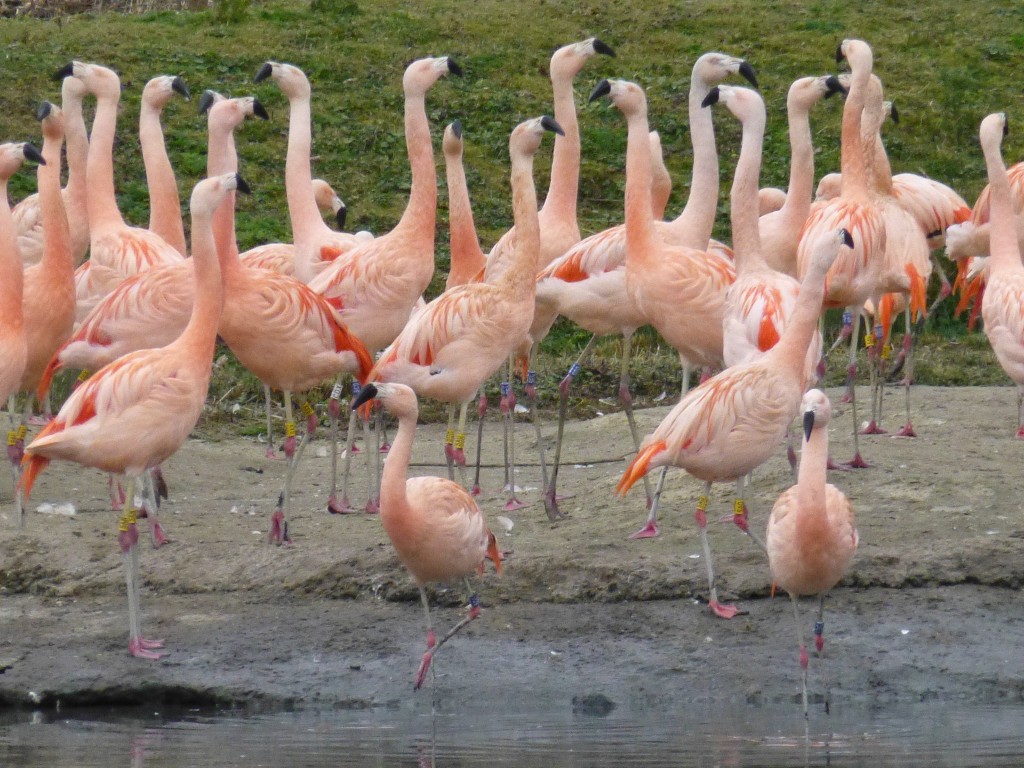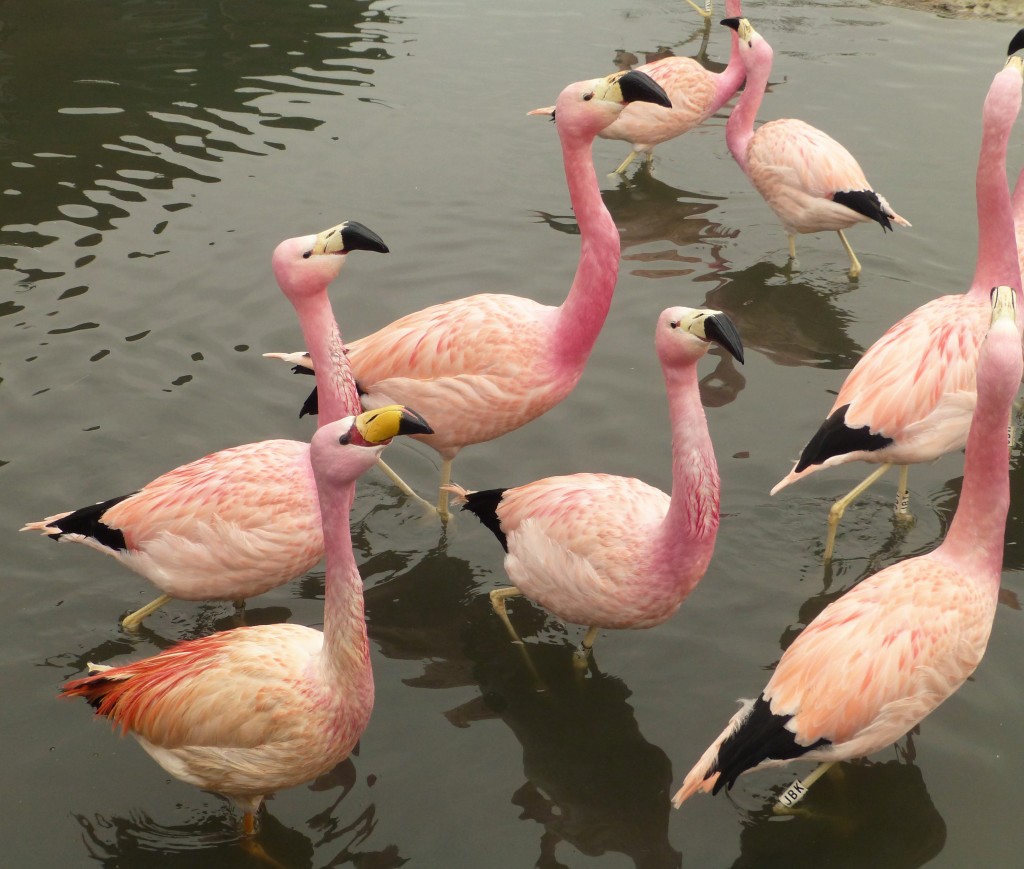South American adventures
Hello flamingo followers. It’s been a good couple of weeks to watch the breeding behaviour of the birds at WWT Slimbridge. All of the flocks have coloured up nicely, and with the Chilean flamingo catch now out of the way, the avics can concentrate on encouraging birds to nest and breed. So what can I tell you about in this instalment? Well, two things at present, all to do with South America.

Firstly, there’s some work going on in the South American Pen to re-lay paths and smooth out the concrete around the famous “stepping stones”. These stepping stones have a flamingo theme as they are old concrete mounds that were used to encourage the flamingos to nest. Concrete mounds are not used anymore as the birds are capable of building their own nests, but these relics remain for the amusement of visitors instead of the birds. You can also see that the opportunity has been taken to move sand into the Pen, ready for the flamingo breeding season. These large heaps of estuary sand will be spread around the areas where the flamingos like to stand, build their nests and crèche their young to keep these places clean and tidy, and comfortable for flamingo feet (both young and old).

Why I am telling you about building work is because it is yet another good example of the “flamingo happiness” at WWT, and excellent animal welfare. The Chilean flock hasn’t had to be moved out of the enclosure during the work, and hasn’t had to be shut inside either. The birds are out and about, and indulging in their courtship display. The flamingos know where the building work is, and that they won’t be disturbed by the folks mending the paths. Unsettled or nervous flamingos will not do their dancing. So you can see that Slimbridge most definitely has stress-free flamingos :-)

On the other side of the Grounds, the Andean flamingo flock is looking very, very pink. As is Mr James. There has been a lot of Andean courtship over the past few days, and they have picked the front of the Pen (by the brick wall) to dance. So if you’re a keen photographer or an interested visitor then you can get very close to the birds and their behaviour.

What always strikes me about the Andeans is how substantial they are when you get up close. They have very round, “cuddly” faces, and are much more heavily built than the other two South American species. Having said that, Mr James is not tiny either, and he is of a similar size to a small female Andean. Putting on a good show this spring, Mr James has the bright red flecks on his chest that are common in courting wild James’ flamingos. And his long scapular feathers (down the back of his wings) have turned a vivid scarlet. The Andeans have the bright purple heads and necks seen in free-living birds too. Dressed in their finest I would say.

The Andeans excel at marching. Which is instigated by the tallest birds in the flock: JAA and JAK. Their chosen display location this month means that you really get to see the size difference between boy and girl. And just how long the necks of the boys actually are! Sadly, the oldest Andean, JBB, had to be put to sleep a few weeks back as his advanced age was being to show, and had become detrimental to his health and well-being. He was very pale, hadn’t put on any colour over the winter, and wasn’t moving around too well. JBB was a very dominant and imposing bird- now that he has departed the flock, it will be interesting to see who fills his “shoes” and exerts the most influence on the other flamingos. Of the remaining males in the flock, JBT is quiet and more of a follower than a leader; JAB is a proper “wallflower” and not normally in the thick of things; JBH is very friendly, the social butterfly and hangs around with anyone; JAA is fairly pushy, but not as pushy as JAF, who can have a temper as black as his wing feathers (my money would be on this one!). The two other big boys, JAU and JAK, behaves a little differently (I will come on to them in a mo). JAA looked a little off-colour last year and he was not 100% at his best. But under the watchful eyes of Sparky and Phil, and with much TLC, he has bounced back to flush with the brightest of pink for this season. Indeed, the colour on all of the birds in this Pen is the brightest that I have ever seen.
https://www.youtube.com/watch?v=G3xKgp-EG3Q

So you will see lots of squabbling of the male Andean flamingos right in the middle of the marching group, which packs itself very tightly together. It’s a weird concept. They like to be close together to march, but they like to get the better of their dancing companions. So like a load of teenage boys with something to prove, they can’t but help have a dig at each other. The more competitive the male, the more likely the arguing. Feathers fly when JAA and JAK don’t play nicely. And what of the other two boys I mentioned earlier? They are proper lovebirds with their wives always by their sides. As such, they very rarely join in the courtship dance. JAU (partner with JAY) and JAK with JBC, do march, but much less regularly than the other Andeans. In fact this week or so they have been more of an obstacle to the displaying birds who have had to manoeuvre around them!

https://www.youtube.com/watch?v=gwgfz2XKMCw
And to round off this story, all of this Andean activity is spurring on the young Caribbeans in this Pen to practice dancing too. Not as coordinated or elegant, but the message is definitely there!


